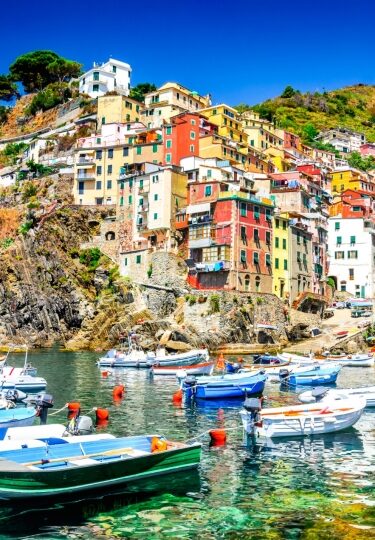Riomaggiore, Italy, is usually referred to as part of a collective: the famous fishing villages known as the Cinque Terre, or “five lands”.
These architecturally striking villages rise from the rugged contours of this part of the Italian Riviera. Their clusters of pastel tower-houses seem to blossom naturally out of the cliffs. Around them, the agricultural terraces that continue to help sustain these isolated villages to this day etch wavy lines across the hillsides.
A visit to this UNESCO World Heritage Site is to experience the quintessential Italian fishing village. Expect fishing boats bringing in your catch of the day, endless ocean views, and aromatic, chestnut-shaded trails.
Discover the wealth of things to do on a visit to the most southerly of the Cinque Terre: Riomaggiore, Italy.
Why Visit Riomaggiore, Italy
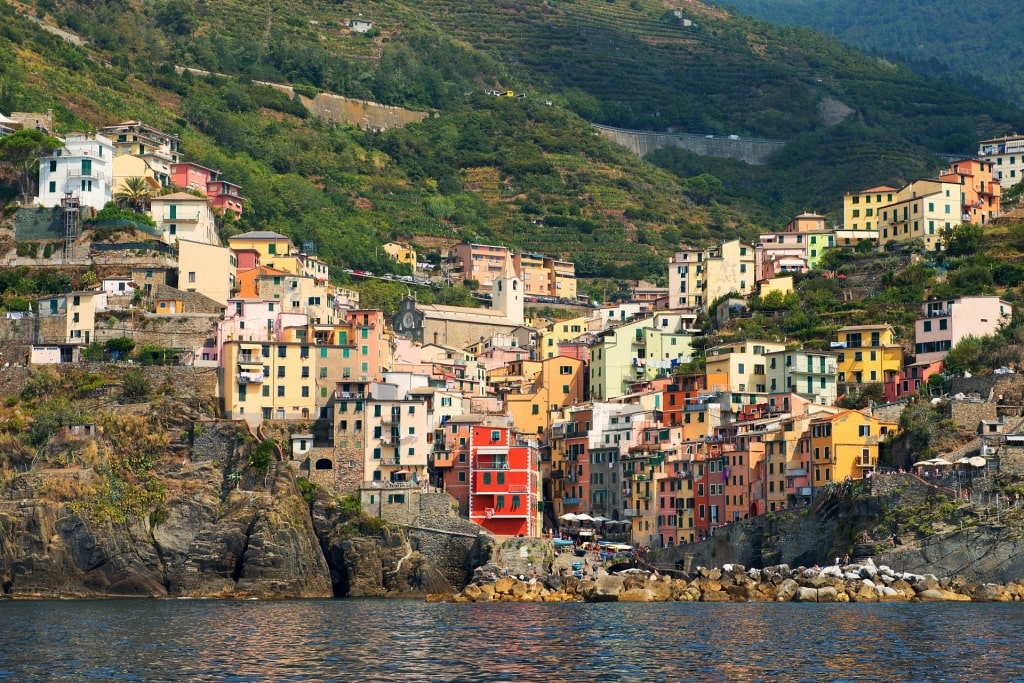
Riomaggiore
A visit to any of the Cinque Terre town delivers a dose of concentrated charm straight to the heart. Think sundowners at romantic cliffside tables, warm, gin-clear seas, and the maze of atmospheric lanes (caruggi) wending between houses adorned in traditional Ligurian colors.
Known for being some of the best coastal towns in Italy, each of the Cinque Terre has its own distinct character.
Riomaggiore, along with Monterosso al Mare, is one of the larger and livelier of the mountain villages. This translates to more caruggi for you to discover, better people watching, and a greater choice of restaurants, cafés, and shops. And it does it without sacrificing any of the Cinque Terre’s bijou charm.
History & Culture
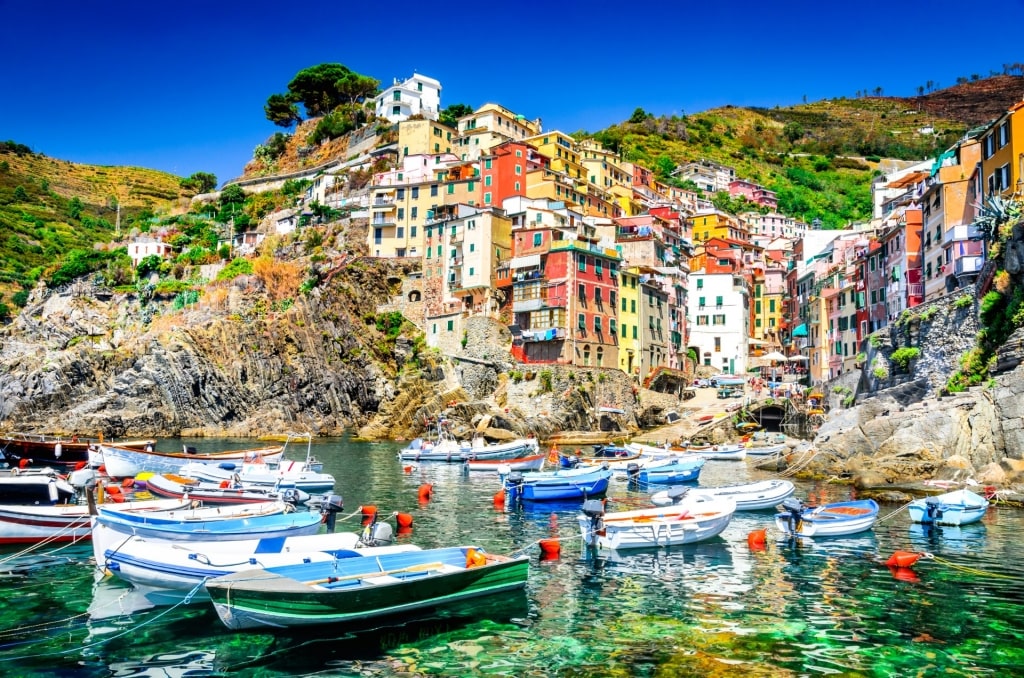
Riomaggiore
A humble fishing village that would grow into one of the world’s most sought-after destinations, Riomaggiore, or its coastal seat, has been inhabited since the Bronze Age.
Its name derives from the Rivus Maior river valley in which the village huddles, and which, beneath your sandalled feet, the eponymous river runs out into the sea.
A widely accepted rumor is that the town, unlike the other four villages, was originally settled by Greeks fleeing persecution in Byzantium. While the village may appear idyllic today, the coastline on which it sits was, for centuries, besieged by attacks from the sea.
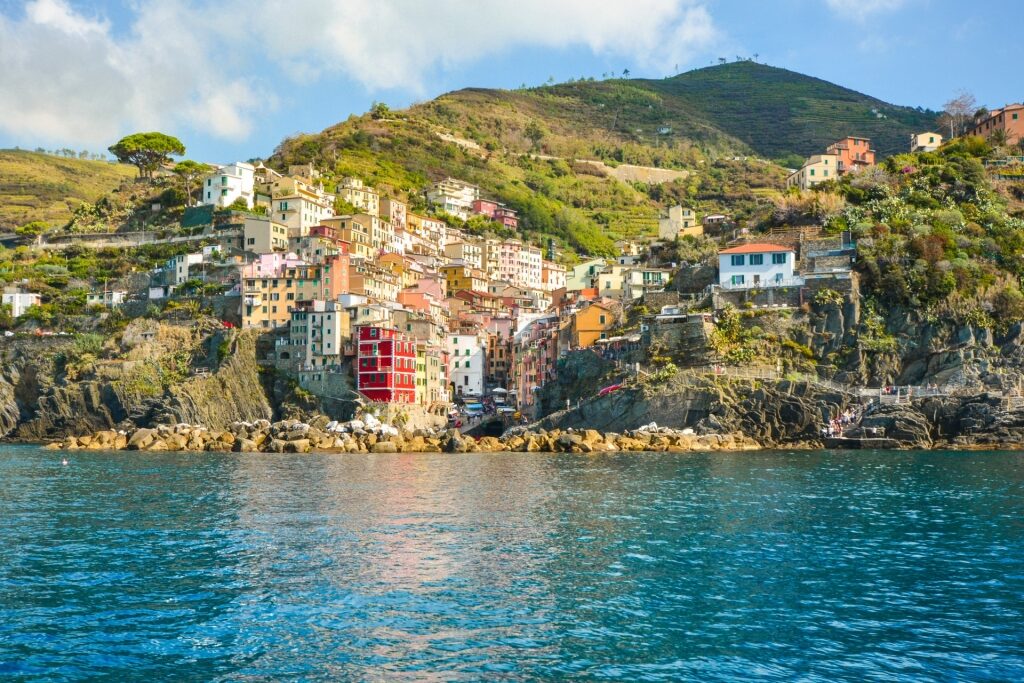
Riomaggiore
In the late Middle Ages, the Saracens seized control of the coastline and destroyed the Cinque Terre, sending their inhabitants fleeing into the scrubby hills. It wasn’t until the 13th century that the threat had subsided enough for the proto-Riomaggioriesi to emerge from their hiding places and rebuild on the coast.
The tell-tale tower houses of the Ligurian coastline, rising up around this small river mouth, are designed to maximize space and provide safety in the event of a raid. The houses cluster tightly together to create the caruggi in which you’ll inevitably become lost, your eyes adjusting to the sudden and deep shade.
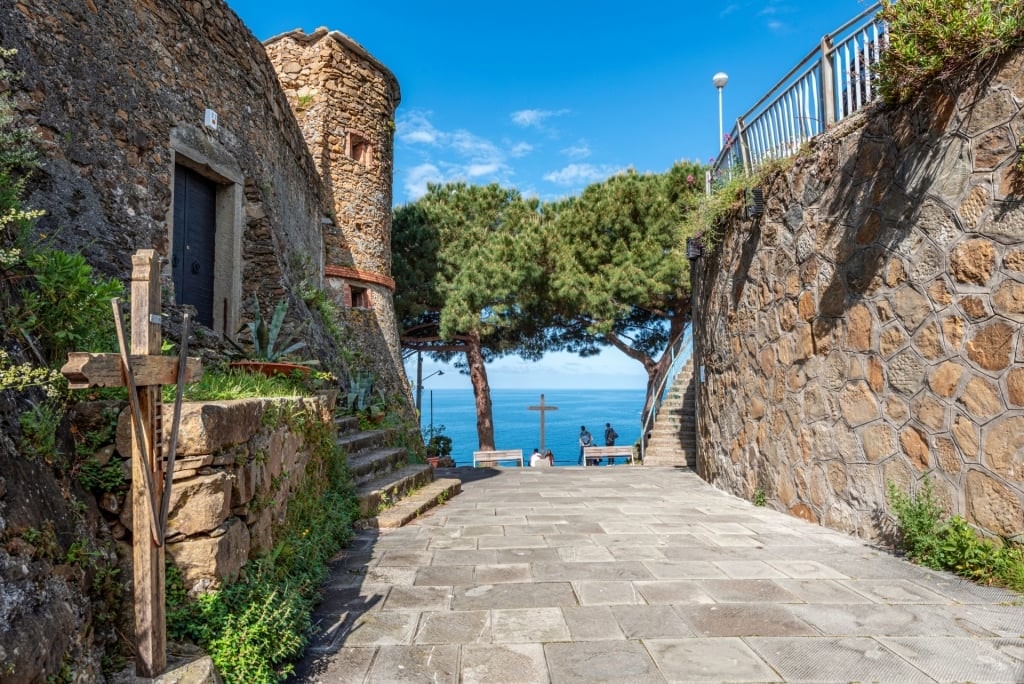
Riomaggiore Castle
Through the medieval period, this stretch of coast fell under the rule of the powerful Genoese Republic. Nevertheless, with the omnipresent threat from the sea and the isolation in which these villages existed, the Riomaggioresi defenders couldn’t rely on swift reinforcements. Its castle was a lynchpin of the Cinque Terre’s defenses.
Tourism began after the reunification of Italy, with the first trains arriving on July 22, 1874. Travel writer Rick Steves brought the Cinque Terre under the microscope with his 1980 guidebook “Europe Through the Back Door”, and a star—with five points—was born.
In 1997, the villages were designated a “cultural landscape” by UNESCO, and in 1999, the Cinque Terre area was declared a national park (Italy’s first and smallest).
Wildlife & Nature
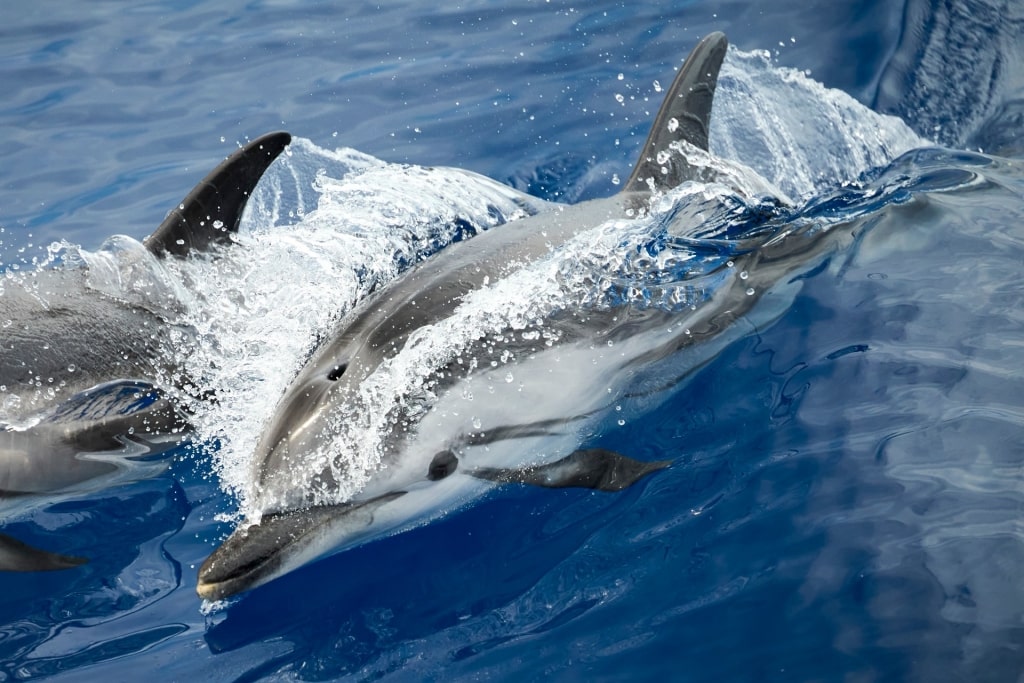
Dolphin
The protection of this unique landscape and all that resides within it extends beyond the craggy cliffs and seaside tables. Pre-dating the national park by two years was the creation of a Protected Marine Area that preserves the many and often rare forms of life clinging to the undersea cliffs just offshore.
The Ligurian Sea is also well known for bottlenose dolphin and whale sightings. Boat trips out to see these marine mammals—including fin whales that are known to live in these protected waters—are plentiful throughout the summer.
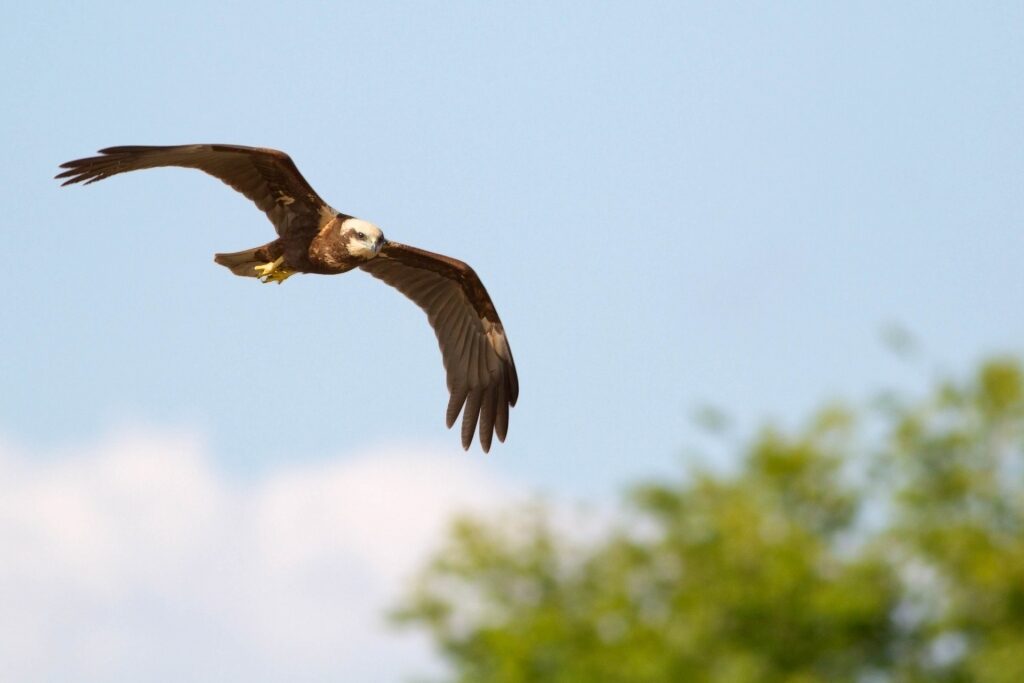
Peregrine falcon
Back on land, while hiking the trails, listen out for the mew of peregrine falcons and look for darting lizards or salamanders in the streams. More wary are the foxes, martens, and wild boar (the latter becoming something of a national pest, as it’s both prolific and destructive).
Tips for Visiting Riomaggiore
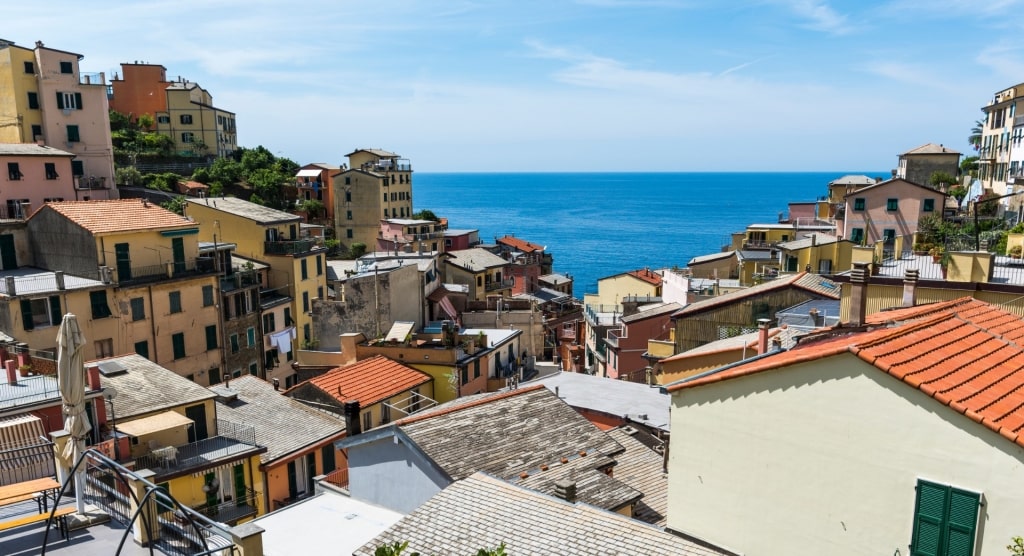
Riomaggiore
It’s simple to find your way around Riomaggiore, Italy. And yet, at some point, you’ll become lost. You won’t be lost for long, but the warren of tightly packed lanes offers a challenge to even the most well-oriented.
The simple part is Via Colombo. This is the spine of the village, the crooked main street punctuated with sunglasses stands and focaccia sellers, small cafés with exceptional espresso, and corner trattorias serving up a speciale del giorno that you’ll recall with a fondness for years to come.
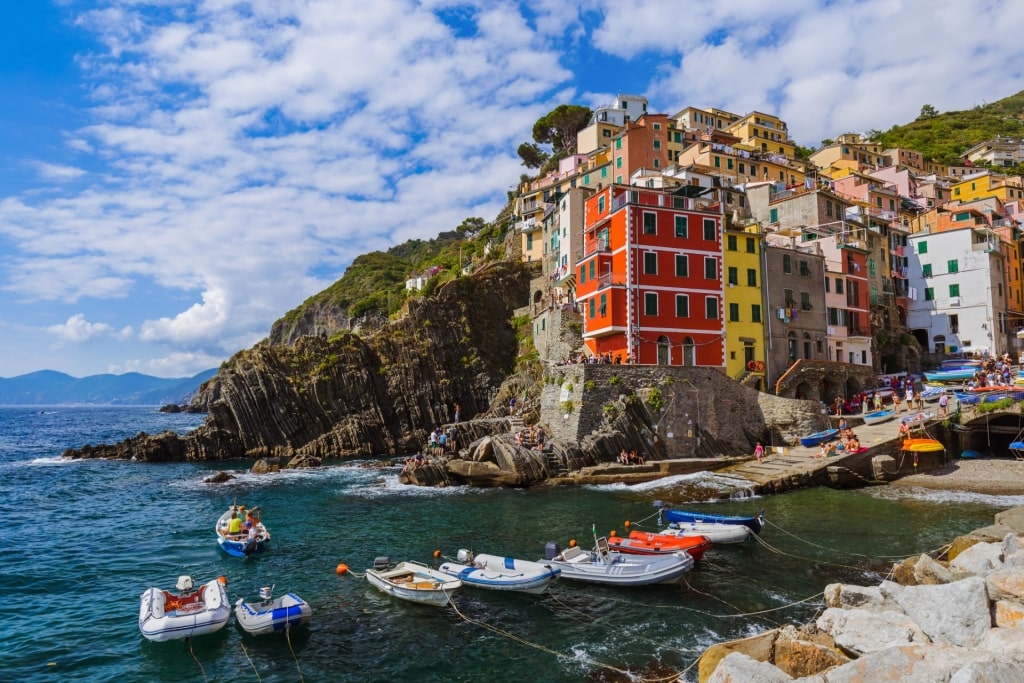
Riomaggiore
Head away from the coast—with good walking shoes—to eventually reach the upper heights. This is the agricultural half of the village or borgo dei contadini. Expect superlative sea views, gnarled but well-maintained fruit groves, and paved trails running beside plots of vines.
Travel with the Riva Maiori stream to the sea, crossing the railway line, and look for the “Marina” sign to make your way to the borgo dei pescatori, or fishing village. Here, the fishermen dry their nets and push out in their gozzi fishing boats, these traditional wooden vessels as brightly colored as the houses on the shore.
Here you’ll find tiny restaurants with limited outdoor seating that offer travelers the opportunity to sit and absorb the scene’s ancient rhythms.
Things To Do & Attractions in Riomaggiore, Italy
Lounge on Riomaggiore Beach
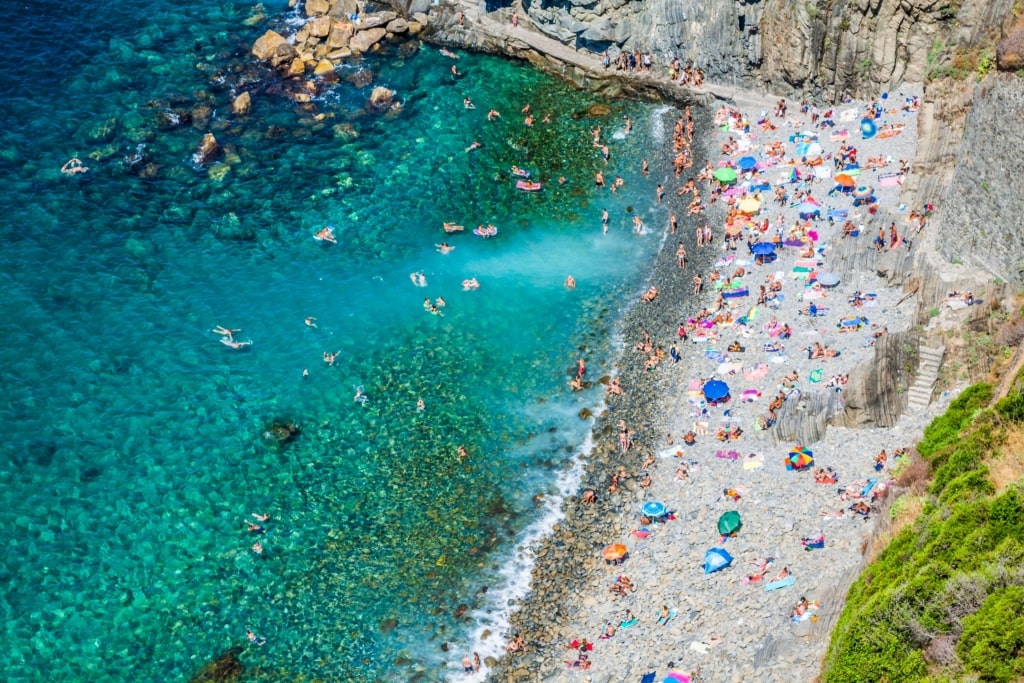
Riomaggiore Beach
While the resort-like Monterosso al Mare claims the sandiest and most spacious beach in the Cinque Terre, Riomaggiore offers a relatively good sized pebble beach offering direct access to the translucent breakers peeling off of the glittering Ligurian Sea.
If you haven’t arrived by water, it’s wholly necessary to observe the beautiful way in which the town rises from its geological chink in the coastline. While you can swim out with the locals, it’s also possible to rent a dinghy or kayak while in Riomaggiore from a kiosk on the seafront.
If you’re keen to dive down into the aquamarine depths of the Marine Protected Area, Riomaggiore is also the only one of the five villages to have its own dive center, the 5Terre Diving Association. You’ll find them down at the harbor. Snorkels are also available.
Read: Best Beaches in Italy
Walk the Trails
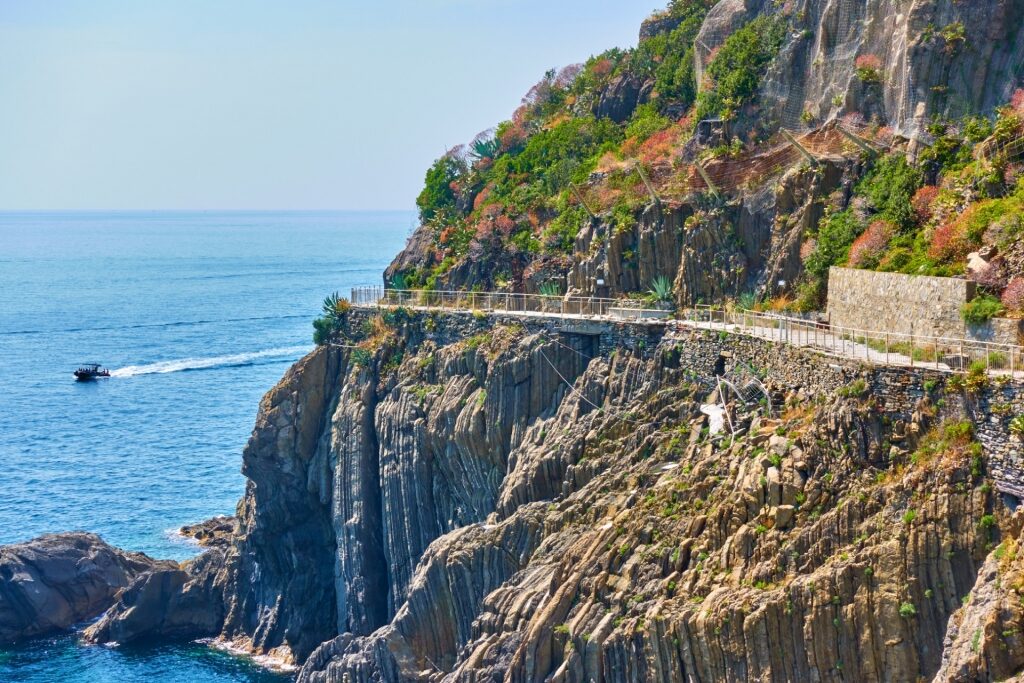
Via dell’Amore
The making of the Cinque Terre has been its absence of roads. In order to reach the neighboring towns, the Riomaggioresi, prior to the arrival of the first chugging steam locomotive in 1874, had to travel by boat or grab their walking sticks and follow the trails through the hillsides.
These trails are still in existence, and much traversed, especially the Sentiero Azzurro (Blue Trail), one of the best hikes in Europe. This former mule track connects all five villages in a seven-and-a-half mile, thigh-busting spectacular.
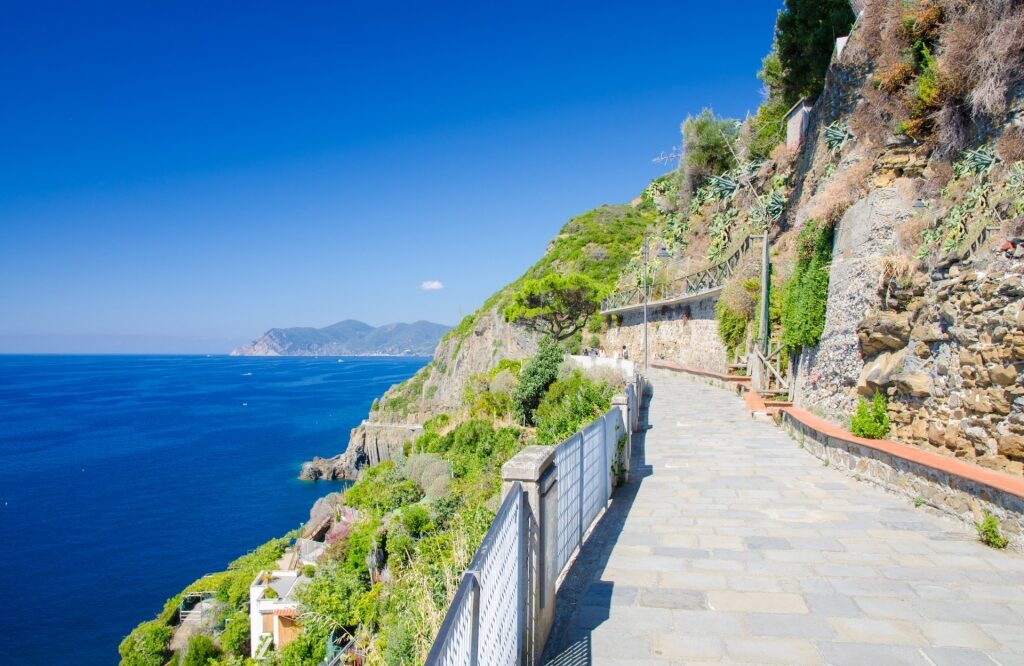
Via dell’Amore
One of the most beautiful stretches, connecting Riomaggiore to romantic Manarola, is the Via dell’Amore (Lovers’ Lane).
There are many further miles of walking trails available for those with the get-up-and-go to abandon their cliffside table and plate of antipasti and, instead, head up the challenging gradients into the agricultural heights.
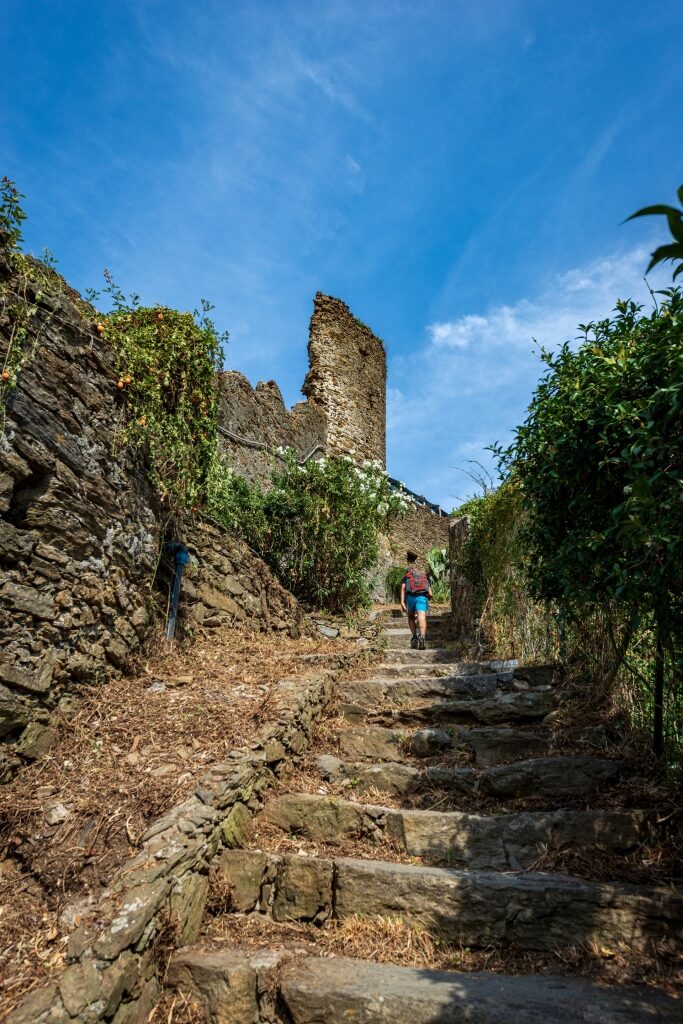
Via dell’Amore
Walking past the chestnut trees, pines, and olive groves, it’s interesting to consider that according to local lore, these trees are descended from those planted by ancient Romans when they upgraded the trails around 155 BC.
Besides the incredible views of this characterful coastline, the trails often lead to interesting destinations along the way, and wandering here is one of the best things to do in Cinque Terre.
See the Sacred Places
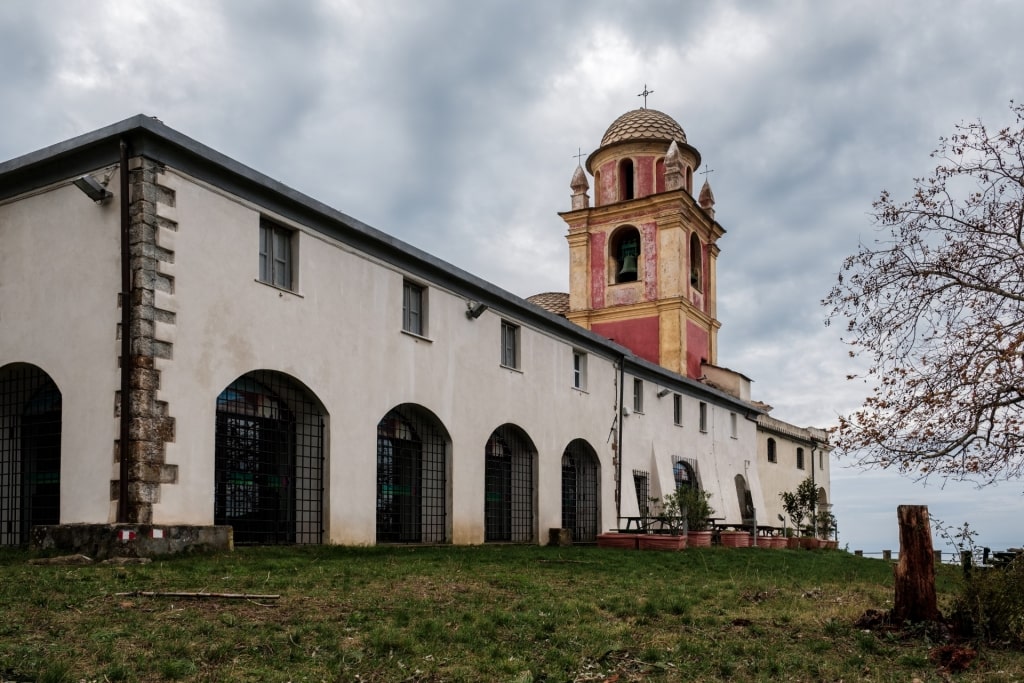
Madonna di Montenero church
Each of the Cinque Terre has a sanctuary above the village representing a relatively local place of pilgrimage. In Riomaggiore, Italy, this is the 11th-century Madonna di Montenero church, located 1,000 feet above sea level.
You have to crunch up stony paths leading from via Santuario for around 45 minutes to reach it. On the way you’ll pass orderly vineyards of Vermentino grapes, or the occasional leafy chestnut tree.
Within its well groomed (and blessedly level) grounds you’ll enjoy a cooling coastal breeze and far-reaching views that, if the weather’s clear, stretch as far as the mountains of Corsica.
If the church is open, inside is an image of the Virgin that was reputedly brought to Riomaggiore by the fishing village’s original Greek settlers.
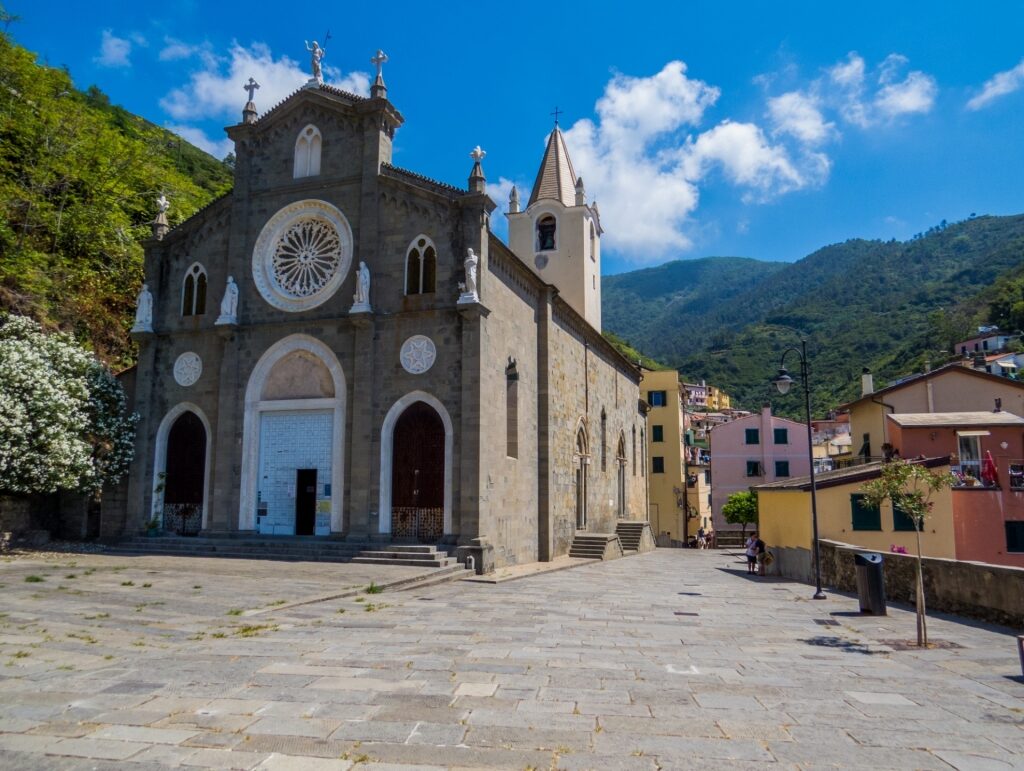
San Giovanni Battista
Less taxing is San Giovanni Battista on Riomaggiore’s Via Pecunia, a handsome gray stone church that dates back to 1340. It’s been heavily renovated through the years, as its 19th-century neo-Gothic facade indicates, although the striking white Carrara marble rosette on the facade was preserved from the original structure.
Another snaking trail rises up the cliff from Spiaggia di Fossola, and leads to a delightful botanical garden and WWII bunkers.
Watch the Sunset From Riomaggiore Castle
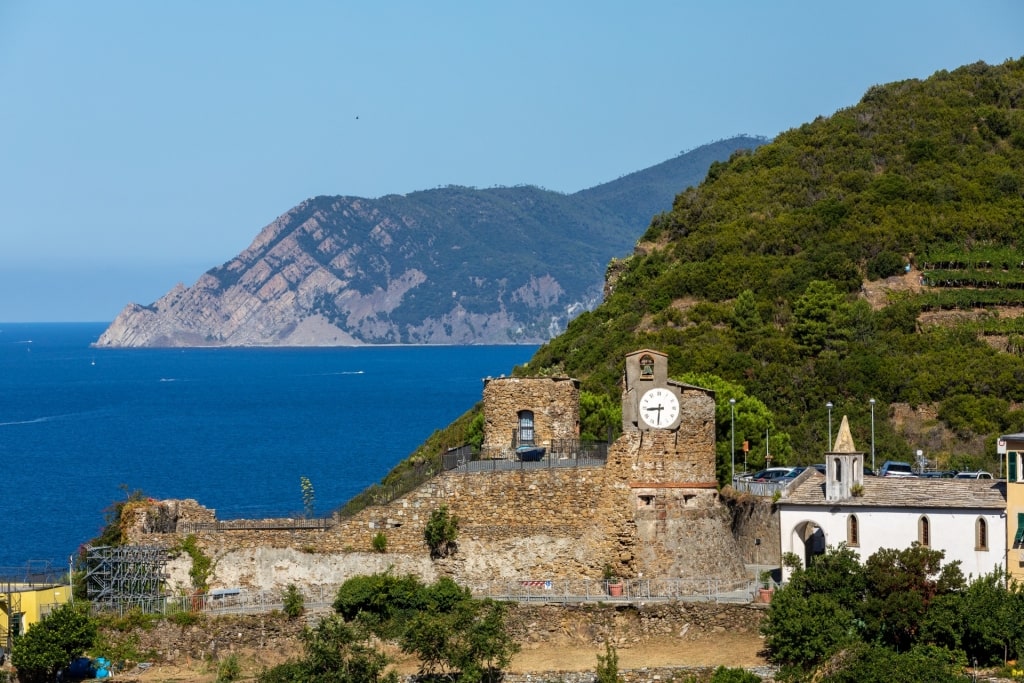
Riomaggiore Castle
Walk back along via Pecunia after visiting San Giovanni Battista and take a right at the fork where a brisk uphill walk will bring you to the pine-shaded elevations dominated by the Castello di Riomaggiore.
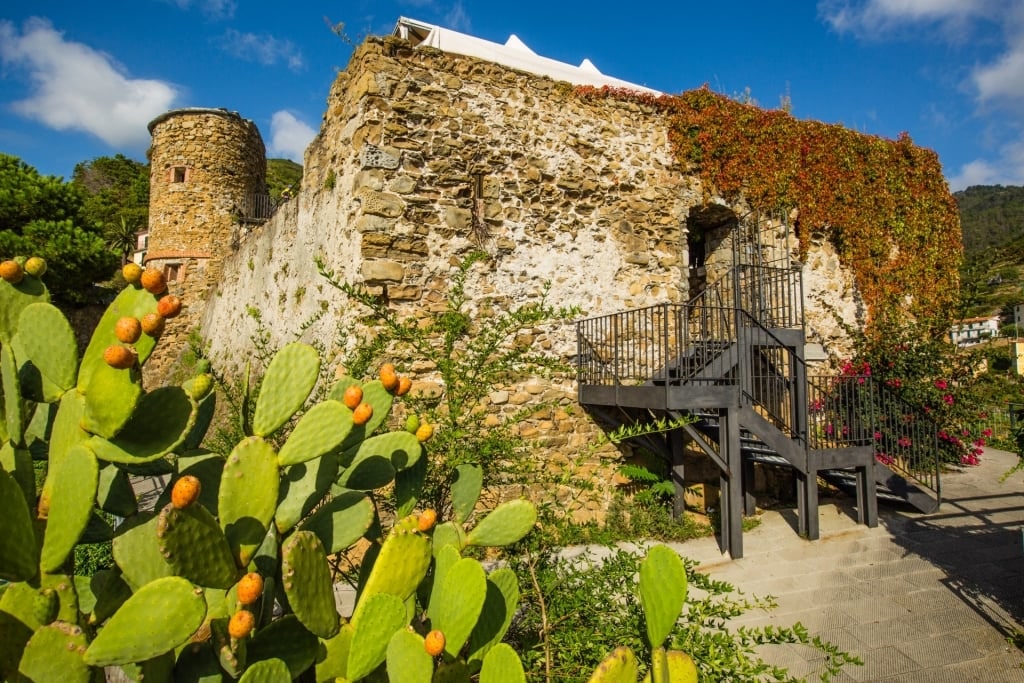
Riomaggiore Castle
Built by the Marquises of Turcotti in 1260, this cliffside fortress was completed by the Republic of Genoa over the course of the next three centuries.
A key part of the Cinque Terre’s defenses in less peaceful times, today the panoramic terrace of this Italian castle is used more for admiring the sunset’s layers of peach and pink rather than spotting dark sails on the horizon.
Go Wine Tasting
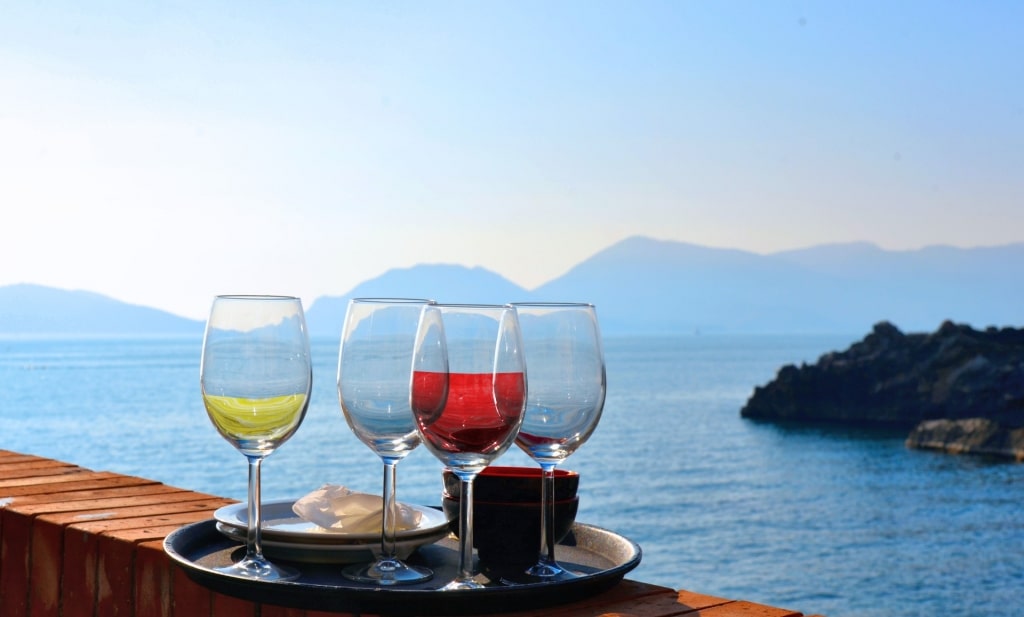
Wine tasting
Winemaking in the Cinque Terre dates back to the time of the Romans. Following a thousand years of viniculture on those steep hillsides, Cinque Terre’s medieval winemakers gained a reputation for excellence across the continent.
By the 1970s, the region had secured DOC accreditation. This ensures that its famously delicious wines—perfect with the locally caught seafood—and traditional methods of production would be preserved.
Among the abundance of delicious fig, olive, and lemon groves planted on the ancient agricultural terraces, Riomaggiore’s winemakers harvest fulsome bunches of Vermentino, Bosco, and Albarola.
These are the main grape varieties that produce the fresh, mineral glass of straw-yellow Cinque Terre DOC that seems somehow tailor-made for your marinated anchovies.

Tiramisu
The Cinque Terre’s hardworking winemakers have even produced a delicious dessert wine to pair with your tiramisu. Sciacchetrà is a chilled glassful of apricots and figs that goes extremely well with the region’s characterful cheeses.
It’s a simple matter to arrange a wine tour ahead of your visit, or while you’re in town. Expect a hike up to a winery, a brief history lesson, and a demonstration of Cinque Terre-style wine-making. Afterward, there will be a fabulous wine tasting with slabs of Liguria’s rosemary and salt focaccia to line the stomach.
Of course, if you’d rather have a more focused, private tasting, find a table on the sun terrace at the quiet Fuori Rotta in Riomaggiore’s backstreets. Order a bottle of Cinque Terre DOC to go with your sautéed squid, and drink in the history.
Food & Drink
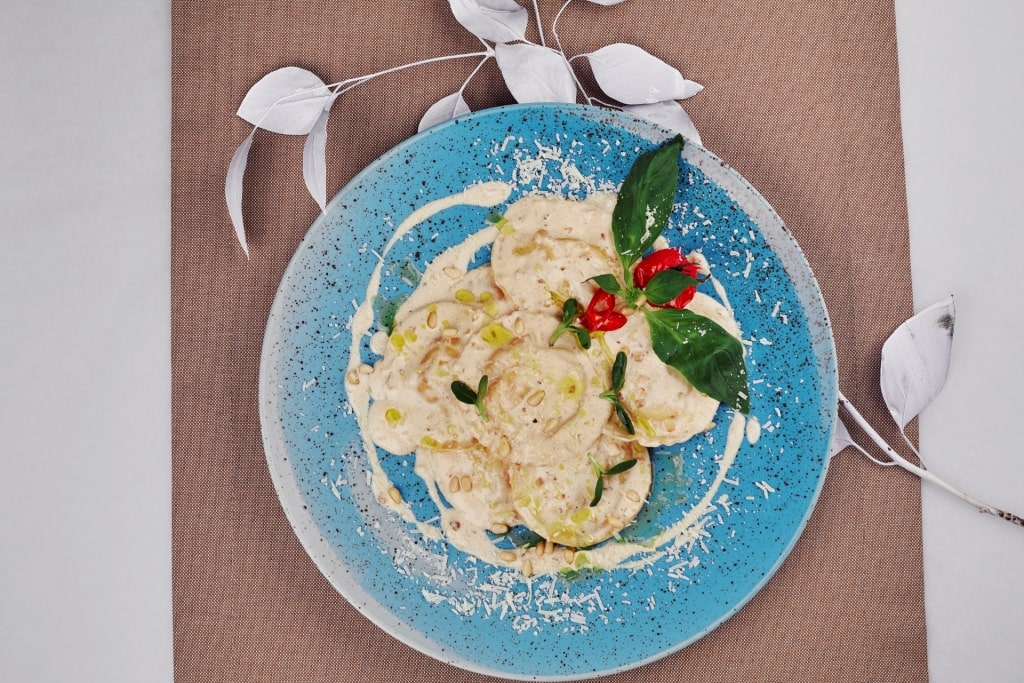
Pansotti
Italian food culture, with its innate creativity, has led to hyper-local culinary specialties. It’s the same with the Cinque Terre, which, while offering broadly Ligurian fare, also has numerous distinct dishes that are the product of centuries of self-reliance.
Perhaps the most famous is pansotti. This pasta dish is a bowlful of exquisite, fresh ravioli stuffed with a blend of no fewer than 14 locally foraged herbs. Often served with ricotta-style cheese made in the area and a magnificent walnut sauce, pansotti will quickly become your favorite Cinque Terre dish.
Other classics in the village include the warming potato and herb soup called menestra de cian and the northern relative of Sicily’s arancini, the turta de risu, or salted rice cake. Of course, this being Riomaggiore, you’re often looking for food on the go as you explore the caruggi or settle on a seaside perch.

Farinata
One of the most delicious smells you’ll encounter in town is that of farinata, a chickpea-based street food favorite.
Flat as a pancake, these crisp-on-the-outside and chewy-in-the-middle treats traditionally come baked with capers and onions in Riomaggiore, but you can also just order them plain with salt and pepper.
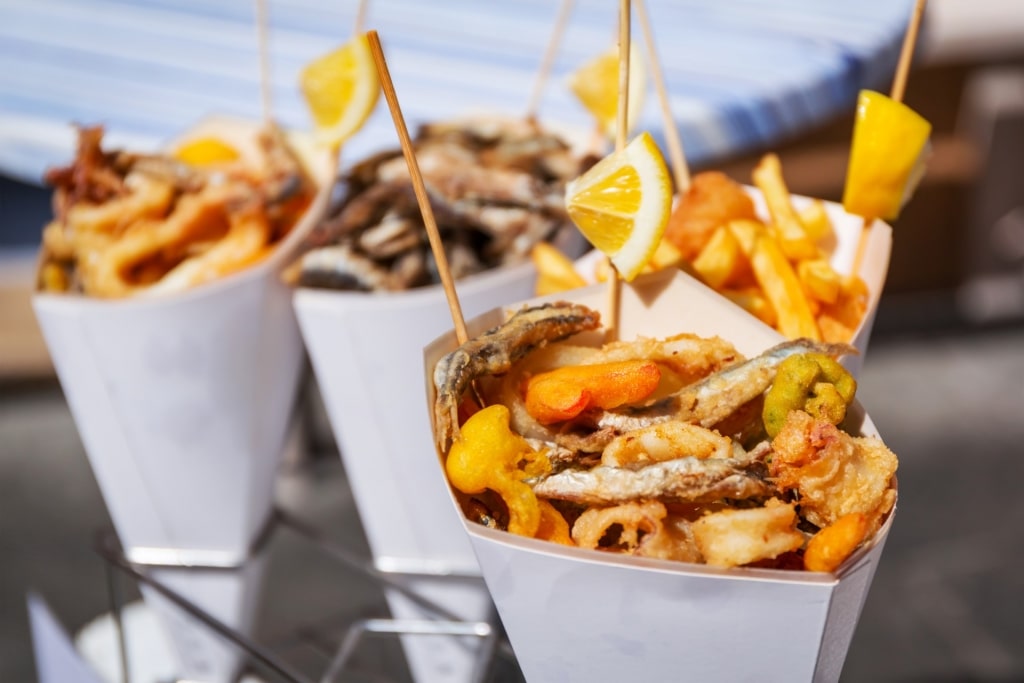
Tutti Fritti
Another takeaway classic is a cardboard cone of fried seafood. Pick up a regular or a large from Tutti Fritti on via Colombo, squeeze your lemon slice over the rigid, salty anchovies within, and find a comfortable perch near the town’s beach to listen to the wash of the waves while you dine.
Best Time to Visit Riomaggiore
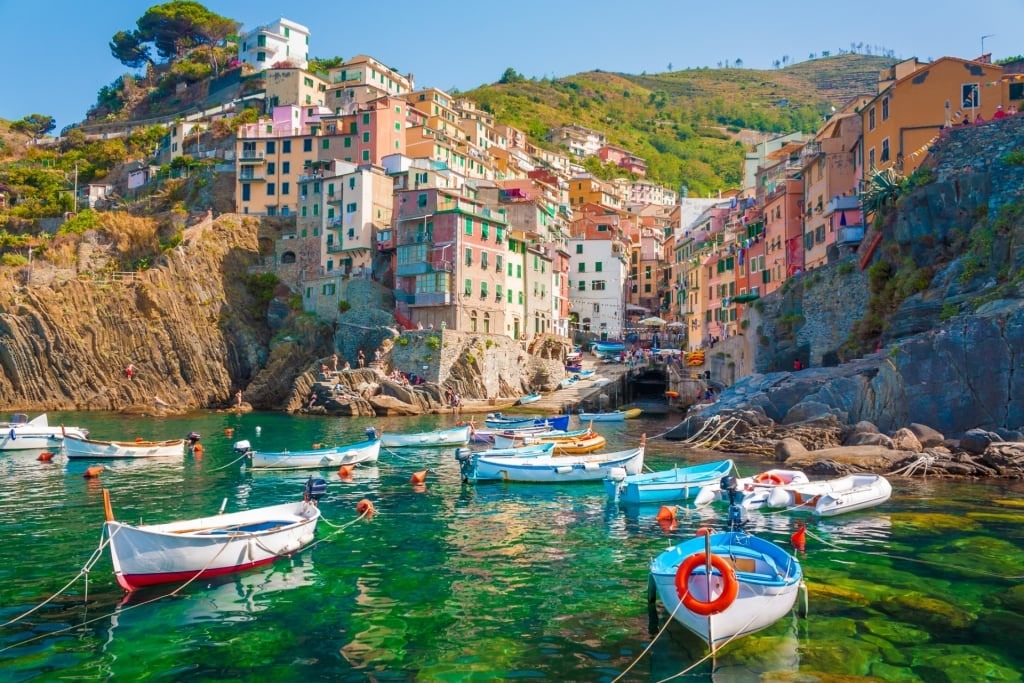
Riomaggiore
Thanks to its isolated position, Riomaggiore, like the rest of the Cinque Terre, would probably have probably been abandoned centuries ago had it not been for the weather.
With 300 days of sunshine ensuring those tower houses pop with color, this area is blessed with a comfortable climate. From late spring, the temperature in the daytime reaches around 68°F, while early autumn remains extremely pleasant, with highs of 77°F. The shoulder seasons are the best times for those keen to hike the trails.
During summer in Italy, the south-facing aspect of the coastline delivers an abundance of sunshine and temperatures of 80°F in July and August. The most intense heat is mellowed by the breezes off of the sea. Dip a toe in the crystalline shallows and you’ll be encouraged to wade deeper into water temperatures of 73°F during the summer.
While the maritime Alps act as a saw-toothed blockade preserving Liguria from a great deal of heavy weather, you can expect the occasional rain shower any time outside of June and July.
However, the gloss of the just fallen rain only serves to heighten Riomaggiore’s beauty when the sun returns, igniting every crystalline drop clinging to the ever-cheerful walls.
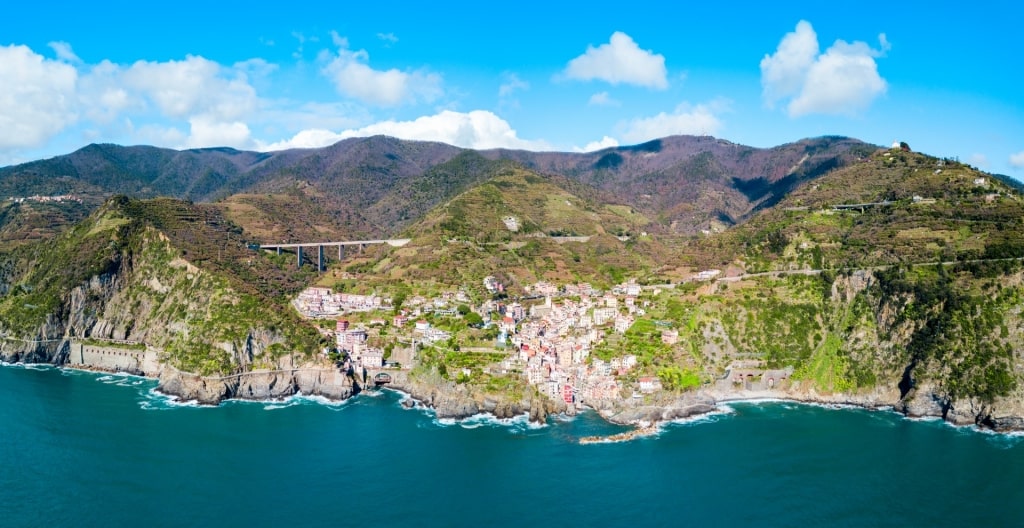
Riomaggiore
See romantic Riomaggiore, Italy, for yourself on a cruise to the bel paese and understand why Cinque Terre DOC wine hardly ever leaves the region. Browse Celebrity’s Cinque Terre cruises and book an unforgettable vacation to a truly unique destination.
